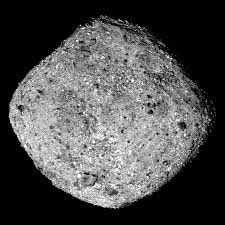Mining Asteroids and Becoming the First Trillionaire

We all know that mining for gold, silver, and other resources on earth can be a fairly lucrative business. Yet what if we collected resources from a location other than the underground– how about outer space? Is it worth the work? How much will it pay? How close are we to actually mining asteroids?
In the future, we will need more resources and materials to survive. We are using many of our resources on this planet at a fast clip, so we’ll likely struggle with construction, technology, and manufacturing if we don’t find other places to obtain resources. Scientists and entrepreneurs want to mine asteroids since they contain, metals, water, minerals and even elements that are impossible to form on earth.
There are plenty of ways to make money here on planet Earth, but the world’s first trillionaire, according to Goldman Sachs, is going to make their fortune in space. According to the investment and banking company, technology is approaching a point where mining asteroids is nearing feasibility, and the first company that makes the leap will be rewarded with riches beyond its wildest dreams.
Mining for valuable materials here on Earth has plenty of legal hurdles attached to it, but lawmakers are already clearing the way for asteroid mining in the anticipation of it becoming a viable business. Asteroid mining in particular is covered by both international treaties (the Outer Space Treaty) and national statutory laws (specific legislative acts in the United States and Luxembourg, for instance). However, international space law prohibits property rights over territories and outer space land.
While in space there is said to be 20,000 NEO (Near-Earth Objects), there are also at least 600,000 asteroids within our solar system.
The most valuable known asteroid is estimated to be worth $15 quintillion, according to Asterank, a database owned by Planetary Resources. Even Neil deGrasse Tyson agrees that the first trillionaire will likely be the person who invests in companies like Planetary Resources.
No actual asteroid mining mission has yet been planned. The construction of a space mining vessel is no small feat, and there are still many technological hurdles to overcome before the world’s first asteroid-exploiting trillionaire is crowned.
But the question still remains, how close are we to mining asteroids?
There are three main types of asteroids: chondrite, or C-type, which have lots of water; stony, or S-type, which have plenty of silicate; and metallic, or M-type, which are the major potential money makers. M-type asteroids which have a high chance of having gold and other rare metals, including platinum.
The first problem is spotting the asteroids. The C-type asteroids are extremely hard to find because they are very dark so they can barely be seen at all. But fear not; NASA has created a NEOCAM (or a Near-Earth Object Camera) that can detect objects near our planet.
But how do we get the resources we need? That’s where TransAstra, a private company working on potential space-mining craft, comes in. Just like honey bees harvest nectar and use it to power their civilization, TransAstra’s system mines resources like water on the asteroids and uses it for the spacecraft’s fuel. Then the rockets use the fuel to bring the resource back down to earth or even to another civilization on another planet.
TransAstra plans on first sending a probe called “MiniBee” – a small vehicle that will be used to test the productivity of their spacecraft. If It is successful, then they will send up a bigger craft called “The Honey Bee.” Then they’ll send the worker bees, and eventually the “Queen Bee.” The fleet will create an ecosystem of asteroid miners.
Instead of buying stocks and bonds here on earth, maybe it’s time to think bigger and invest in mining asteroids.

Harrison is a senior and is excited for his fourth year at the Harriton Banner. In addition to the Banner, Harrison also runs the Business Journal for...

